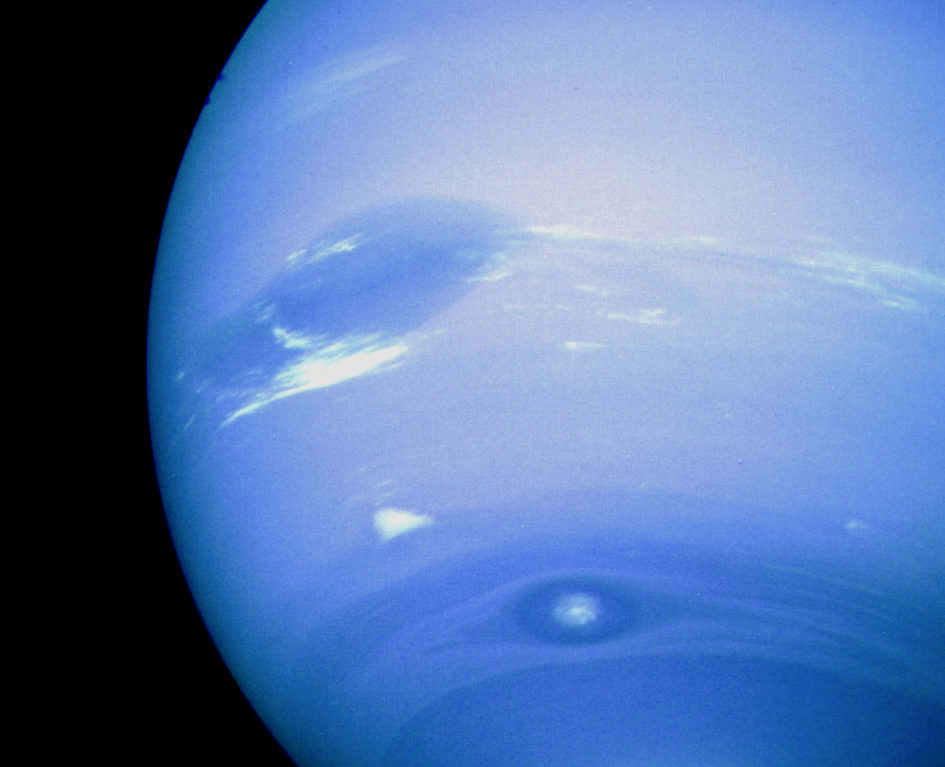As a gas giant (or ice giant), Neptune has no solid surface. In fact, the blue-green disc we have all seen in photographs over the years is actually a bit of an illusion. What we see is actually the tops of some very deep gas clouds, which in turn give way to water and other melted ices that lie over an approximately Earth-size core made of silicate rock and a nickel-iron mix. If a person were to attempt to stand on Neptune, they would sink through the gaseous layers.
As they descended, they would experience increased temperatures and pressures until they finally touched down on the solid core itself. That being said, Neptune does have a surface of sorts, (as with the other gas and ice giants) which is defined by astronomers as being the point in the atmosphere where the pressure reaches one bar. Because of this, Neptune’s surface is one of the most active and dynamic places in entire the Solar System.

